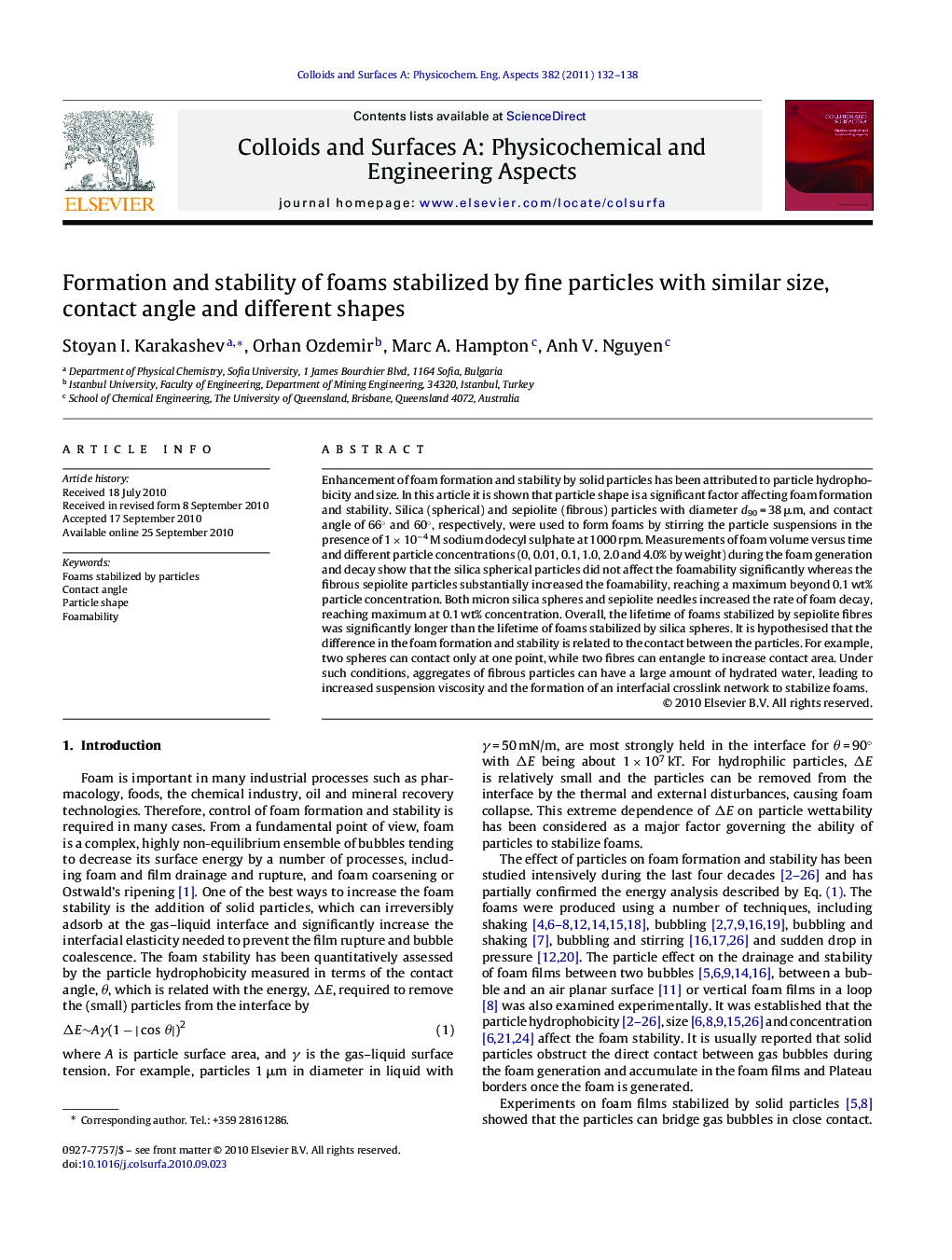| Article ID | Journal | Published Year | Pages | File Type |
|---|---|---|---|---|
| 594848 | Colloids and Surfaces A: Physicochemical and Engineering Aspects | 2011 | 7 Pages |
Enhancement of foam formation and stability by solid particles has been attributed to particle hydrophobicity and size. In this article it is shown that particle shape is a significant factor affecting foam formation and stability. Silica (spherical) and sepiolite (fibrous) particles with diameter d90 = 38 μm, and contact angle of 66° and 60°, respectively, were used to form foams by stirring the particle suspensions in the presence of 1 × 10−4 M sodium dodecyl sulphate at 1000 rpm. Measurements of foam volume versus time and different particle concentrations (0, 0.01, 0.1, 1.0, 2.0 and 4.0% by weight) during the foam generation and decay show that the silica spherical particles did not affect the foamability significantly whereas the fibrous sepiolite particles substantially increased the foamability, reaching a maximum beyond 0.1 wt% particle concentration. Both micron silica spheres and sepiolite needles increased the rate of foam decay, reaching maximum at 0.1 wt% concentration. Overall, the lifetime of foams stabilized by sepiolite fibres was significantly longer than the lifetime of foams stabilized by silica spheres. It is hypothesised that the difference in the foam formation and stability is related to the contact between the particles. For example, two spheres can contact only at one point, while two fibres can entangle to increase contact area. Under such conditions, aggregates of fibrous particles can have a large amount of hydrated water, leading to increased suspension viscosity and the formation of an interfacial crosslink network to stabilize foams.
